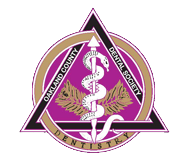Leading Dentist in Ferndale, MI Answers Frequently Asked Questions
At our practice, we understand that patients often have questions about their dental health, treatment options, and what to expect during their visits. That’s why we’ve created this helpful FAQ page—to give you quick, clear answers to the most common concerns we hear every day. As your trusted dentist in Ferndale, MI, we are here to make sure you feel informed, supported, and confident in your care.
Whether you’re wondering about the best way to maintain your oral hygiene, what your insurance covers, or how long certain procedures take, we’ve compiled answers to guide you through. Our goal is to help you feel at ease every step of the way—from your very first phone call to the completion of treatment and beyond.
We believe communication is key to a great dental experience. As a leading dentist in Ferndale, MI, we encourage all of our patients to ask questions and take an active role in their oral health journey. No question is too small or too specific—your peace of mind is important to us.
If your question isn’t answered below or you need more detailed information, we welcome you to give us a call at (248) 545-6400. Our knowledgeable and friendly team is always happy to help. Choosing the right dentist in Ferndale, MI means choosing a practice that cares about your comfort and clarity. Thank you for trusting us with your smile—we’re here to support you every step of the way.
- How Can I Take Care of My Teeth if I'm Wearing Braces or a Retainer?
- Will My Braces Interfere With My School Activities Like Sports, Playing an Instrument, or Singing?
- Do I Need to Brush My Teeth More Often if I Have Braces?
- What kind of braces are available?
- What is Orthodontics?
- What age should my child have an orthodontic evaluation?
- Do Braces Hurt?
- What Are Some Signs That Braces May Be Needed?
- Should I See My General Dentist While I Have Braces?
- What can I do about bad breath?
- What are the proper ways to take care of my dentures?
1.Firstly, make sure to use a soft bristled brush. Hard bristled brushes can wear down the enamel of your teeth.
2. Place your brush at a 45 degree angle to your gumline. Bristles should contact both the tooth surface and the gumline.
3. Use short back and forth strokes or tiny circular movements to brush your teeth. Each movement should be no bigger than the size of each tooth.
4. Make sure to use gentle strokes while brushing. Gentle strokes are effective in removing plaque, while too much pressure can wear down the enamel of your teeth.
5. Brush all surfaces of each tooth, including the outer, inner, and the chewing surfaces of the teeth.
6. Finally, don't cut your brushing short! Make sure to brush for at least 2 minutes.
1. Take 18" of floss and wind it around the middle finger of each hand .You can use these fingers to take up floss as it becomes dirty. Using your thumb and forefinger, pinch the floss leaving 1-2 inches in between for cleaning.
2. Gently move the floss up and down the spaces of your teeth. Never snap the floss down onto your gums, as it can cause damage.
3. As you move the floss down into the space between two teeth, slide it up and down against the surface of one tooth. Gently clean at the gumline as well.
4. Repeat this process for all of your teeth.
- gums that bleed while brushing
- red, swollen or tender gums
- gums that have pulled away from the teeth
- bad breath that doesn't go away
- pus between your teeth and gums
- loose teeth
- a change in the way your teeth fit together when you bite
- a change in the fit of partial dentures
In-office teeth whitening
In-office teeth whitening works by producing a significant color change in your teeth in short amount of time, usally within an hour. The procedure is done at the dentist's office applying a high-concentration peroxide gel on the teeth after they have been protected with a special shield.
Professionally Dispensed Take-Home Whitening Kits
These whitening kits are purchased from your doctor for use at home. The strength of the gel used in these kits is lower than that used for in-office bleaching, and thus the gel can be applied for longer periods of time. Usually the trays are worn a couple hours a day or overnight for a few days or weeks depending on the product.
Over the counter whitening
Over the counter teeth whitening kits are store-bought and use a lower concentration gel than both in-office bleachin and take-home kits purchased from your doctor. While they are less expensive, they typically are less effective than methods that can be performed by your dentist because of the low concentration gel. Additionally, over the counter trays are not custom fit for your teeth, which can result in irritation to your gums while wearing the trays.
Regardless of the cause of your bad breath, good oral hygiene and regular checkups to the dentist will help reduce it. Brushing and flossing will eliminate particles of food stuck between your teeth which emit odors. It will also help prevent or treat periodontal disease (gum disease), caused by plaque buildup on your teeth, which can lead to bad breath. Dentures should be properly cleaned and soaked overnight in antibacterial solution (unless otherwise advised by your dentist). Finally, make sure to brush your tongue regularly to eliminate any residue.
1.Firstly, make sure to use a soft bristled brush. Hard bristled brushes can wear down the enamel of your teeth.
2. Place your brush at a 45 degree angle to your gumline. Bristles should contact both the tooth surface and the gumline.
3. Use short back and forth strokes or tiny circular movements to brush your teeth. Each movement should be no bigger than the size of each tooth.
4. Make sure to use gentle strokes while brushing. Gentle strokes are effective in removing plaque, while too much pressure can wear down the enamel of your teeth.
5. Brush all surfaces of each tooth, including the outer, inner, and the chewing surfaces of the teeth.
6. Finally, don't cut your brushing short! Make sure to brush for at least 2 minutes.
1. Take 18" of floss and wind it around the middle finger of each hand .You can use these fingers to take up floss as it becomes dirty. Using your thumb and forefinger, pinch the floss leaving 1-2 inches in between for cleaning.
2. Gently move the floss up and down the spaces of your teeth. Never snap the floss down onto your gums, as it can cause damage.
3. As you move the floss down into the space between two teeth, slide it up and down against the surface of one tooth. Gently clean at the gumline as well.
4. Repeat this process for all of your teeth.
- gums that bleed while brushing
- red, swollen or tender gums
- gums that have pulled away from the teeth
- bad breath that doesn't go away
- pus between your teeth and gums
- loose teeth
- a change in the way your teeth fit together when you bite
- a change in the fit of partial dentures
In-office teeth whitening
In-office teeth whitening works by producing a significant color change in your teeth in short amount of time, usally within an hour. The procedure is done at the dentist's office applying a high-concentration peroxide gel on the teeth after they have been protected with a special shield.
Professionally Dispensed Take-Home Whitening Kits
These whitening kits are purchased from your doctor for use at home. The strength of the gel used in these kits is lower than that used for in-office bleaching, and thus the gel can be applied for longer periods of time. Usually the trays are worn a couple hours a day or overnight for a few days or weeks depending on the product.
Over the counter whitening
Over the counter teeth whitening kits are store-bought and use a lower concentration gel than both in-office bleachin and take-home kits purchased from your doctor. While they are less expensive, they typically are less effective than methods that can be performed by your dentist because of the low concentration gel. Additionally, over the counter trays are not custom fit for your teeth, which can result in irritation to your gums while wearing the trays.
Regardless of the cause of your bad breath, good oral hygiene and regular checkups to the dentist will help reduce it. Brushing and flossing will eliminate particles of food stuck between your teeth which emit odors. It will also help prevent or treat periodontal disease (gum disease), caused by plaque buildup on your teeth, which can lead to bad breath. Dentures should be properly cleaned and soaked overnight in antibacterial solution (unless otherwise advised by your dentist). Finally, make sure to brush your tongue regularly to eliminate any residue.
Clean and Soak
Removable dentures should be taken out at bedtime, cleaned, and soaked in a water-based cleaning solution overnight to keep your mouth healthy, remove food and plaque, and minimize staining. Dentures should be cleaned only with dish washing liquid or denture cleanser applied to a moistened denture brush or soft toothbrush, and all surfaces, inside and out, should be gently scrubbed. Individuals with implant overdentures need to practice especially careful oral hygiene, with thorough cleaning of the gums, attachment mechanism, and overdenture.
Keep Those Appointments!
Periodic examinations are key to maintaining oral health and ensuring that your dentures continue to function properly. In addition to routine exams, see your dental professional to:
- Address sore spots and irritations
- Remove stubborn stains that don’t come off with routine cleaning
- Repair broken dentures
- Determine if dentures need to be replaced (usually needed every 4 to 8 years).
Cost
Fees for denture-related services vary widely. Speak to your dental professional and contact your state or local dental society about any available resources.
Your Beautiful Smile
Communicating your needs, concerns, and expectations will help your dental professional provide you with the treatment plan and dentures that are best for you—giving you peace of mind, good oral health, and a reason to smile for years to come.





